Bangladeshi researchers contributed to 15413 scientific publications in Scopus-indexed journals, conference proceedings, and book series in 2024 (data taken on January 4. 2025). The top three research areas are engineering, computer science, and medicine. There was no patent in 2024. Publications in textile research appeared for the first time on the list. DU, DIU, and BUET are among the top three universities. Abu Reza Md Towfiqul ISLAM from Begum Rokeya University, M. Khalid Hossain from Bangladesh Atomic Energy Commission, and Akbar Hossain from Bangladesh Wheat and Maize Research Institute, Dinajpur have appeared as the top three productive researchers.
- The Top 15 Most Productive Researchers
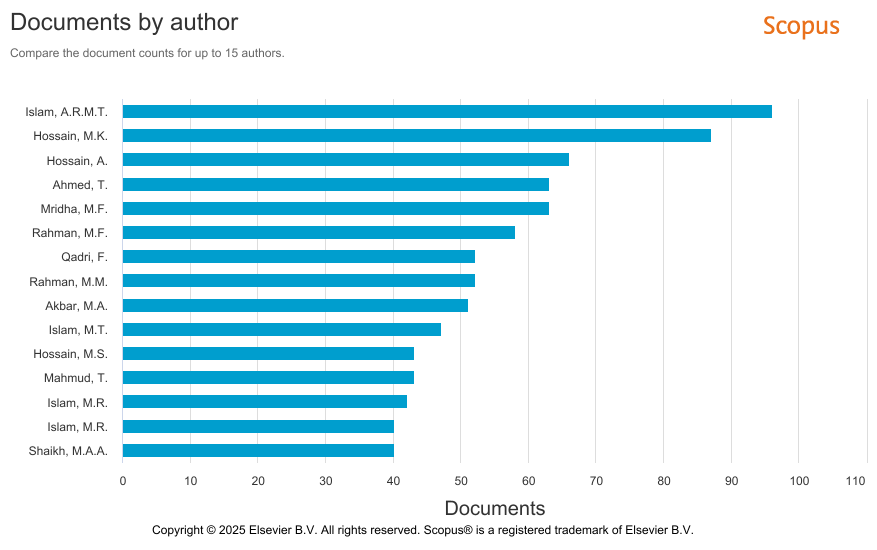
2. The Top 5 Most Productive and Collaborative NRB Researchers
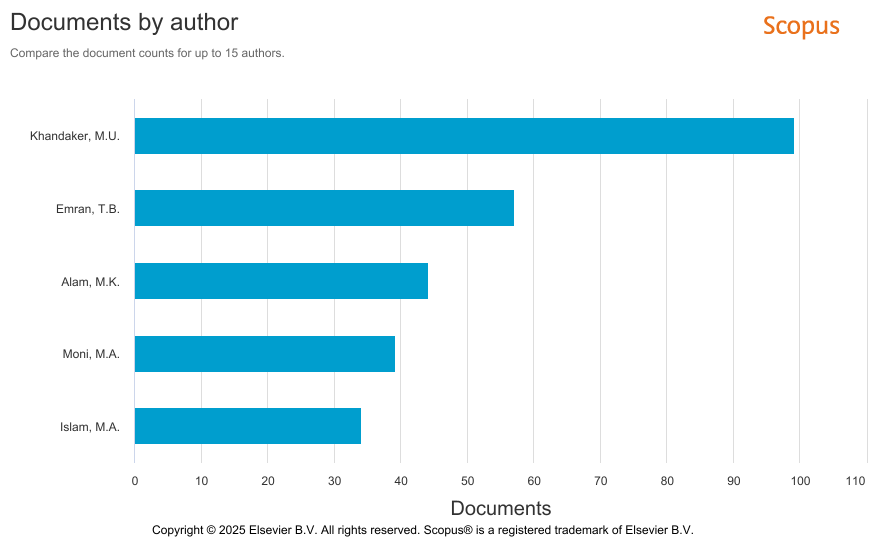
| Author | Documents | ||
| Khandaker, M.U. | 99 | ||
|
|
||
| Alam, M.K. | 44 | ||
| Moni, M.A. | 39 | ||
| Islam, M.A. | 34 |
3. The Top 15 Most Productive Institutes
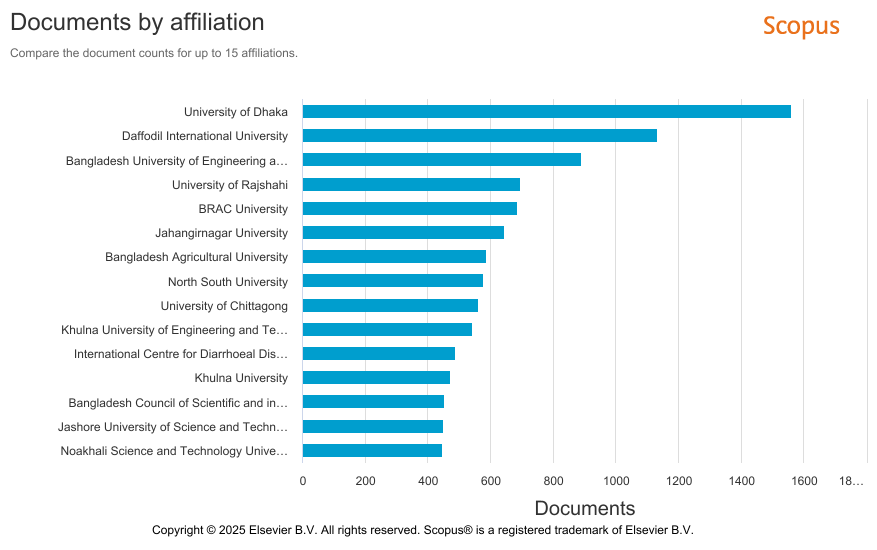
4. The Top 15 Most Productive Public Universities
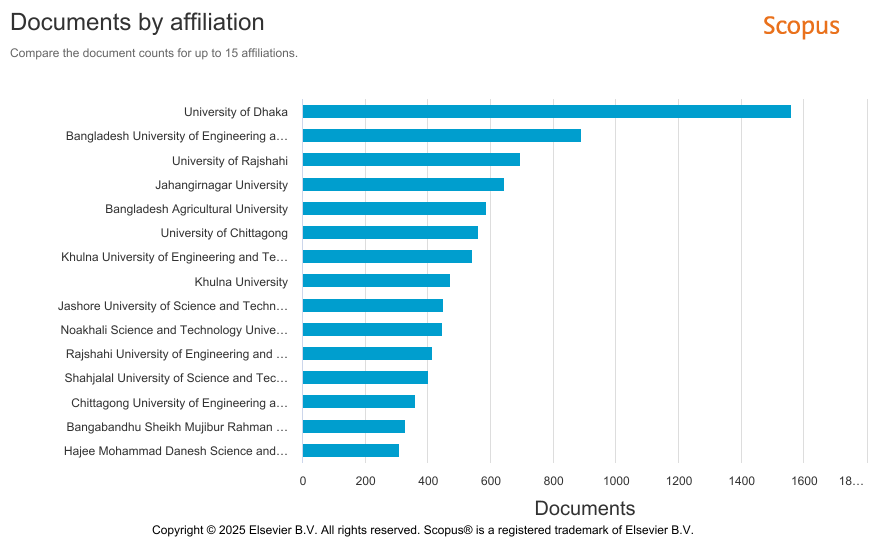
5. The Top 15 Most Productive Private Universities
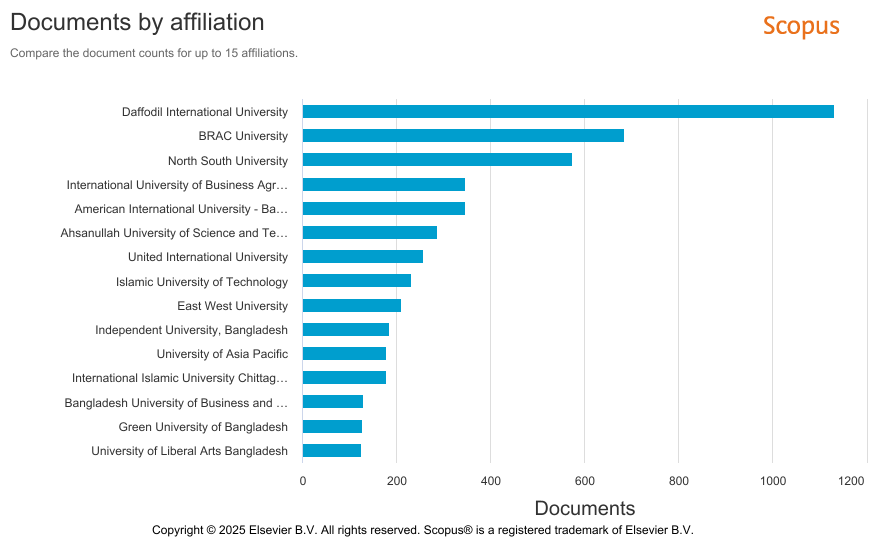
6. The Top 15 Collaborative Foreign Universities/Institutes
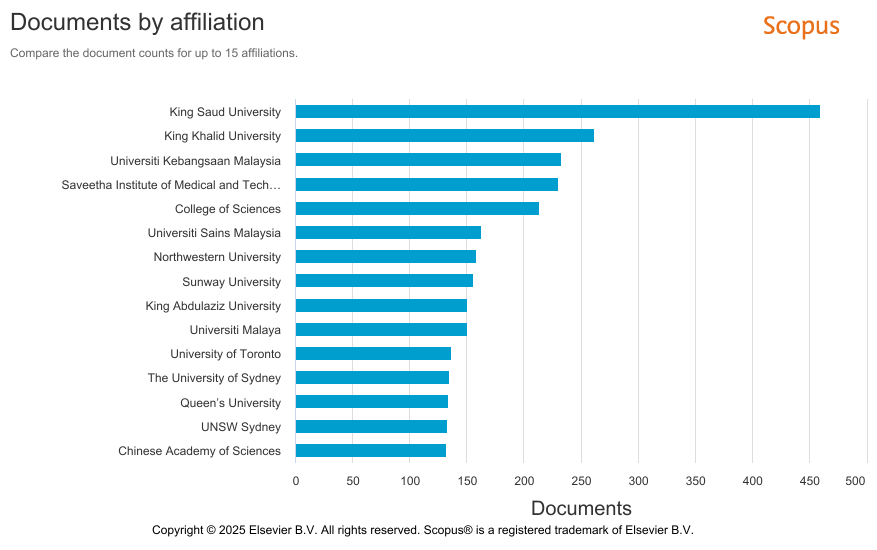
7. The Publication Scenario of Engineering and Technology Universities
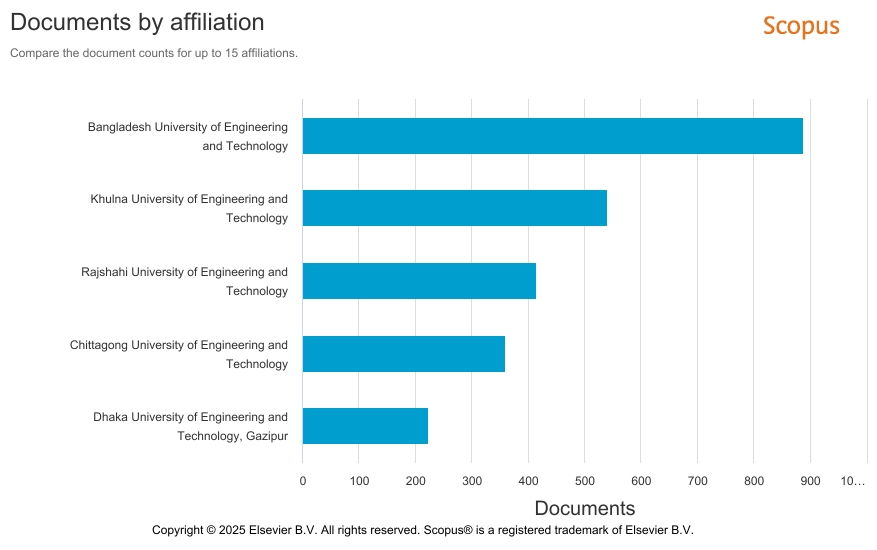
8. The Publication Scenario of Agricultural Universities
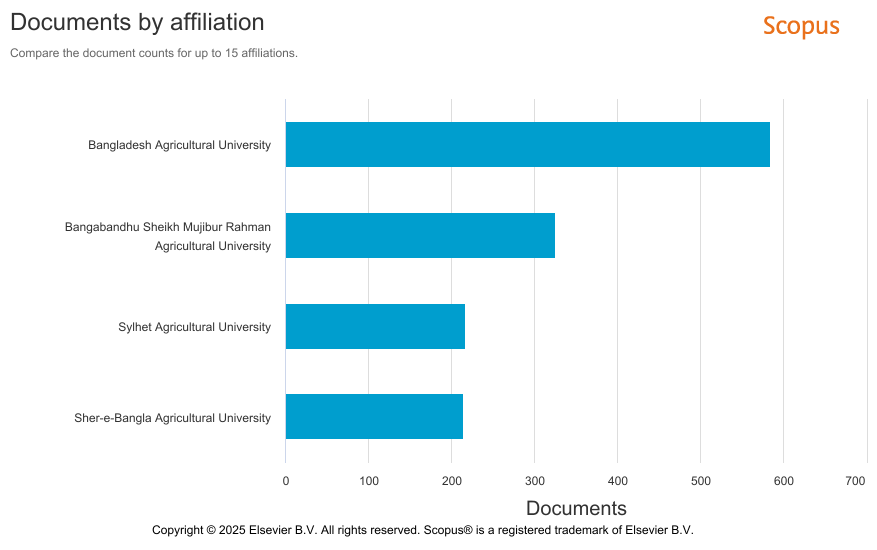
9. The Publication Scenario of The Science and Technology Universities/Institutes
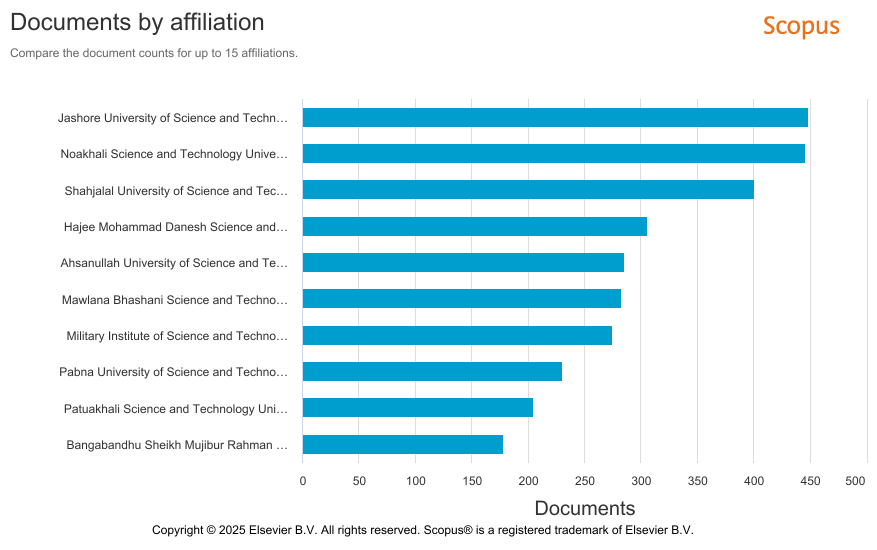
10. The Publication Scenario of Medical Universities/ Colleges ( Bangladeshi and Foreign )
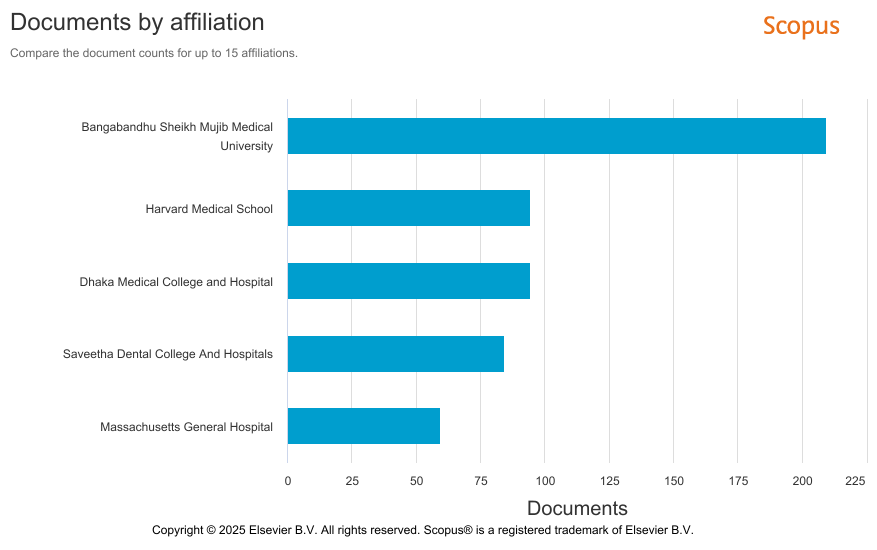
11. Publication Scenario of Multidisciplinary Government Research Organisation
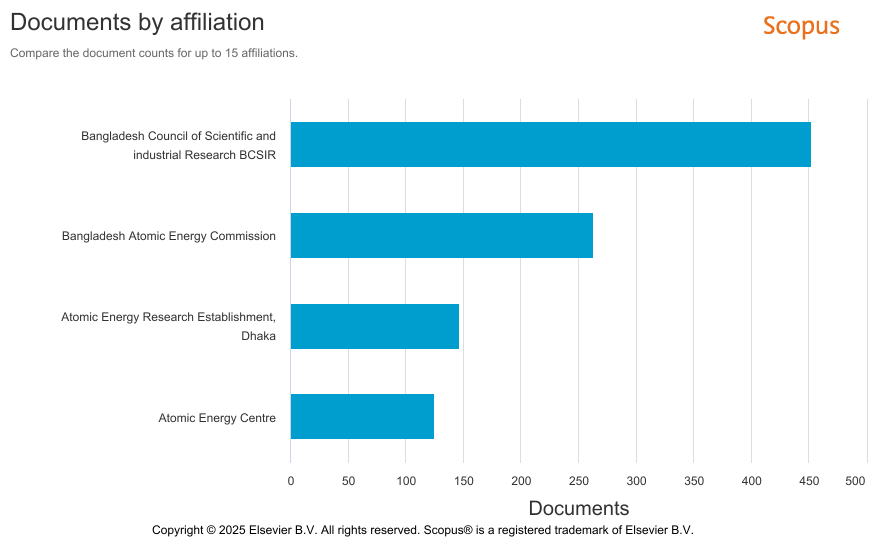
12. The Publication Scenario of Textile Universities/Institutes
For the first time, publications in textile research have been in large numbers to be listed. But National Institute of Biotechnology could not publish enough articles to be listed
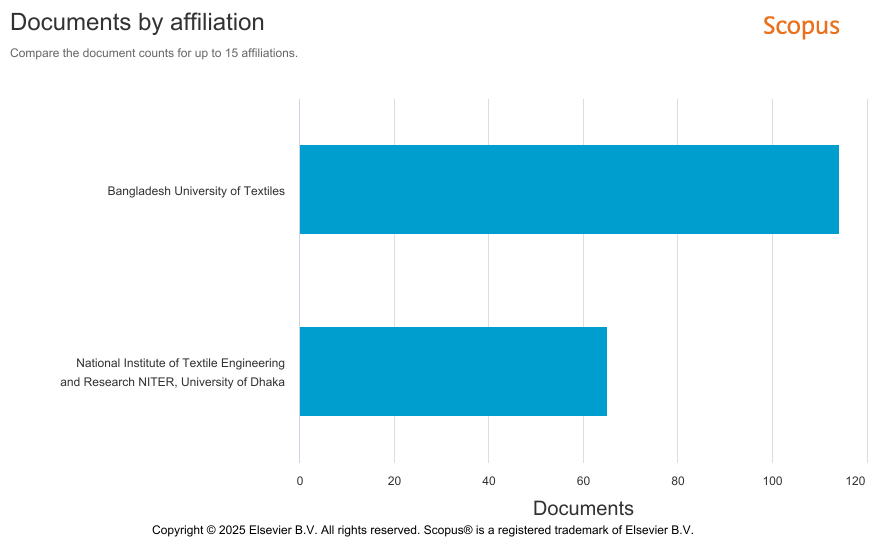
13. The Publication Scenario of Agriculture and Fisheries Research Institutes
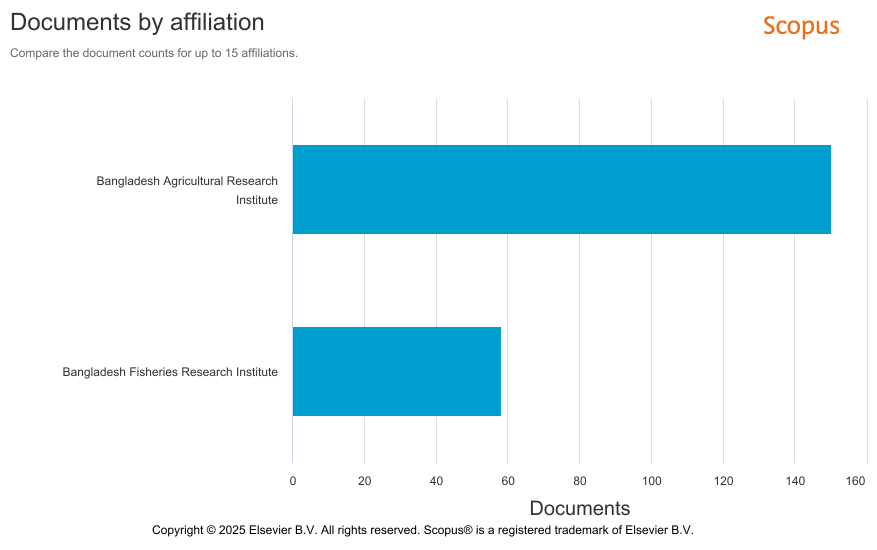
14. The Top 10 Popular A) Journals/Conference Proceedings of Bangladeshi Researchers and B) their Citescore
A. 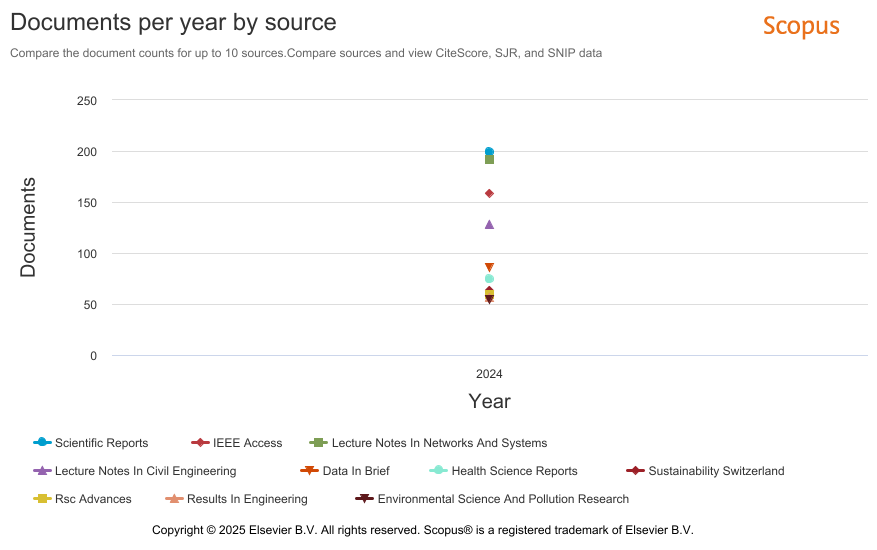 B. CiteScores of the most popular journals/ conference proceedings
B. CiteScores of the most popular journals/ conference proceedings
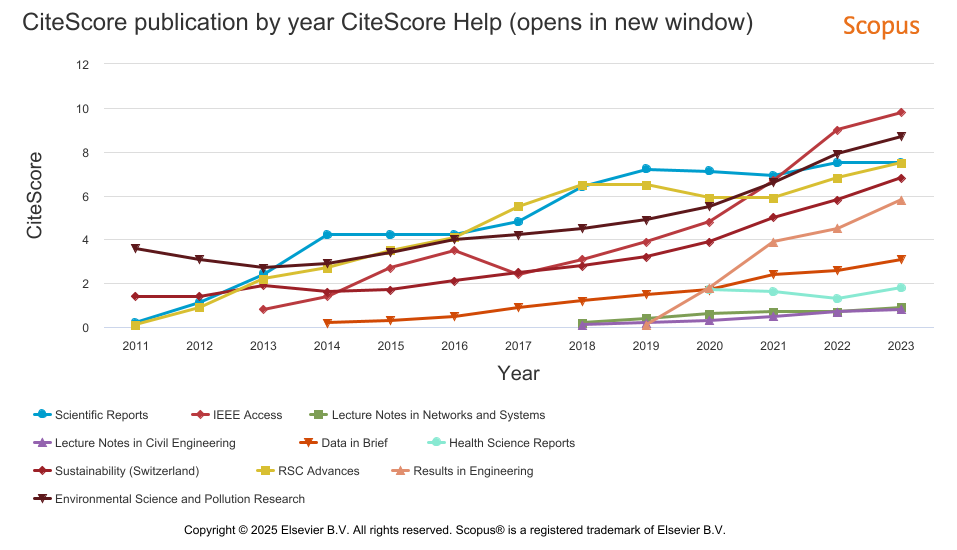
15. The Ratio of the Different Types of Scientific Documents Published by Bangladeshi Researchers
More than 600 book chapters and 47 books
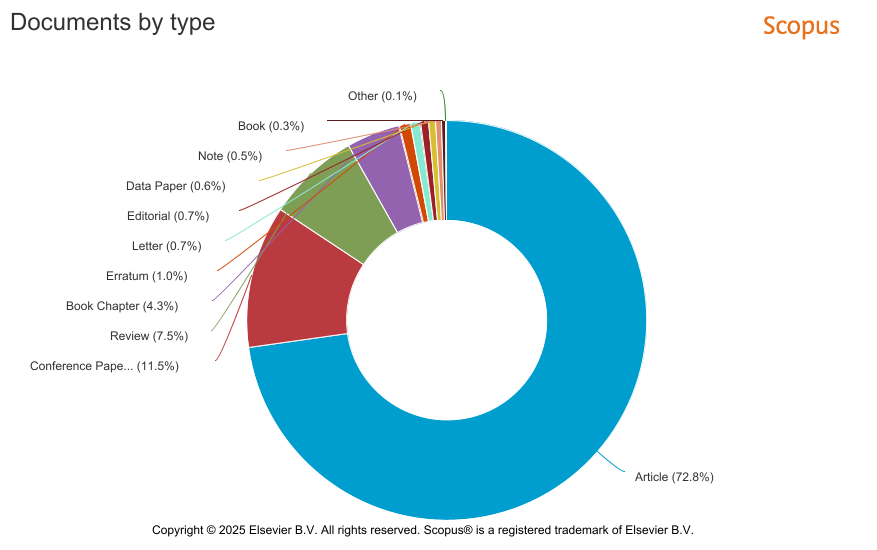
| document type | Documents |
|---|---|
| Article | 11221 |
| Conference Paper | 1779 |
| Review | 1156 |
| Book Chapter | 664 |
| Erratum | 147 |
| Letter | 113 |
| Editorial | 104 |
| Data Paper | 89 |
| Note | 73 |
| Book | 47 |
| Short Survey | 16 |
| Retracted | 4 |
16. The Ratio of Different Subject Areas
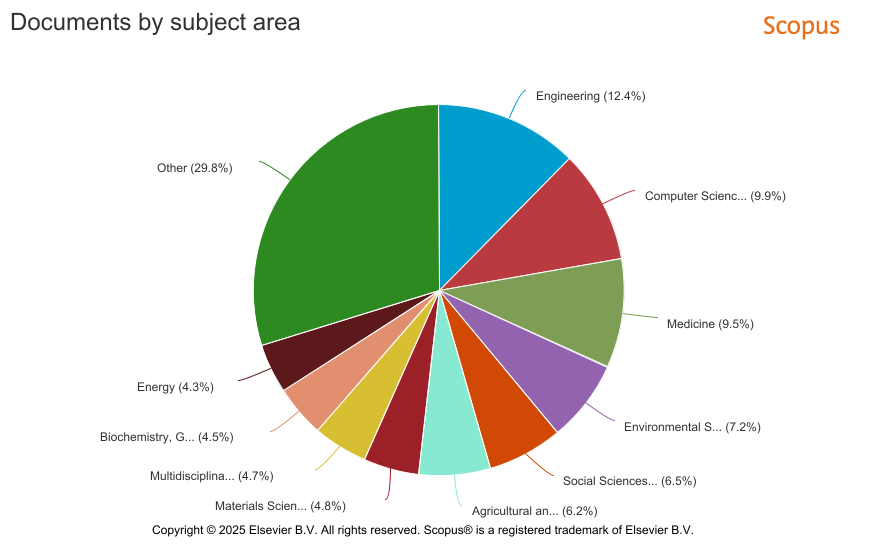
Top Ten Subject Areas
| subject area | Documents |
|---|---|
| Engineering | 3727 |
| Computer Science | 2964 |
| Medicine | 2852 |
| Environmental Science | 2152 |
| Social Sciences | 1958 |
| Agricultural and Biological Sciences | 1871 |
| Materials Science | 1454 |
| Multidisciplinary | 1411 |
| Biochemistry, Genetics and Molecular Biology | 1356 |
| Energy | 1300 |
17, The Top 15 Collaborative Research Partner Countries
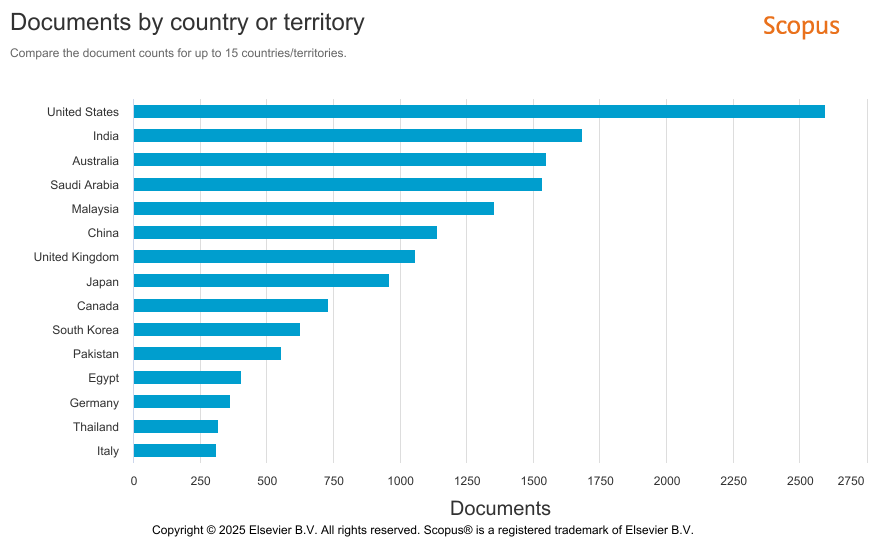
18. The Top 15 Funding Agencies
Among the top 15 funding agencies, 11 are foreign agencies. Among the national funding agencies, the Ministry of Science and Technology is the top (overall 2nd) agency, BUET is the only University and BCSIR has appeared as a funding agency among the top 15. Is it a good research funding scenario for a country?
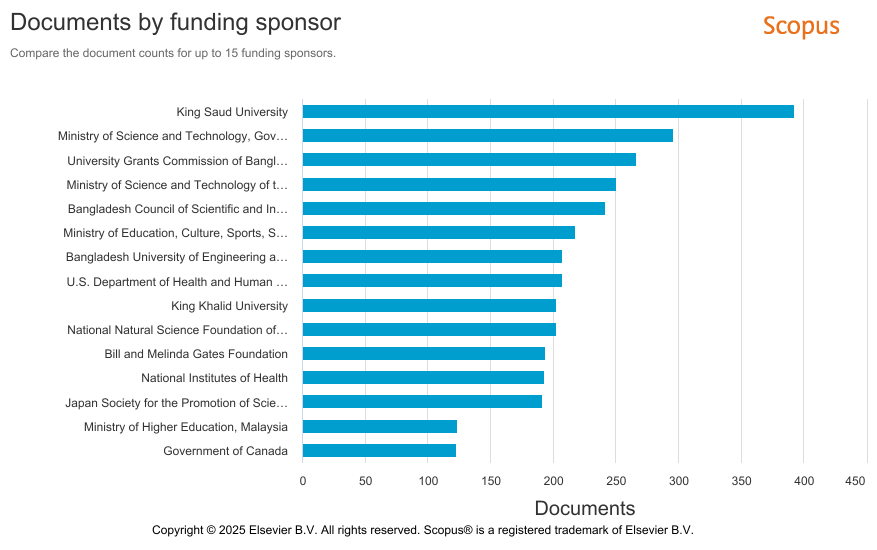
19. Patent
No patent was registered in any international authority by Bangladeshi researchers in 2024.
20. Publication Scenario in the South Asia
Country 2023 2024
Afghanistan 616 770
Bangladesh 15028 15413
Bhutan 277 267
India 318691 334,617
Maldives 146 184
Nepal 3628 3997
Pakistan 41088 42353
Srilanka 4426 4107
The above table shows how we are doing in scientific research and publications in comparison to our South Asian neighbors.
Concluding Remarks
Based on the scientific and technological capacity, the countries of the world are divided into four groups:
- Scientifically advanced countries
- Scientifically proficient countries
- Scientifically developing countries
- Scientifically lagging countries.
At present, Bangladesh is one of the 66 scientifically lagging countries. Without significant scientific progress, Bangladesh cannot achieve:
- National security
- Food safety
- Environmental protection
- Cybersecurity
- Biosafety
- Climate resilience
- Health Security
- Military strength
- Border Safety
- Financial stability
Scientific advancement is also essential for creating job opportunities for the youth and meeting the material needs of a growing population.
To achieve this, the government of Bangladesh 2.0 must prioritize education and research, aiming to raise investment in these sectors to 5% of GDP by 2040. This will enable Bangladesh to transition from a scientifically lagging nation to a scientifically advanced one by 2050.


